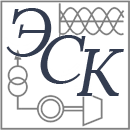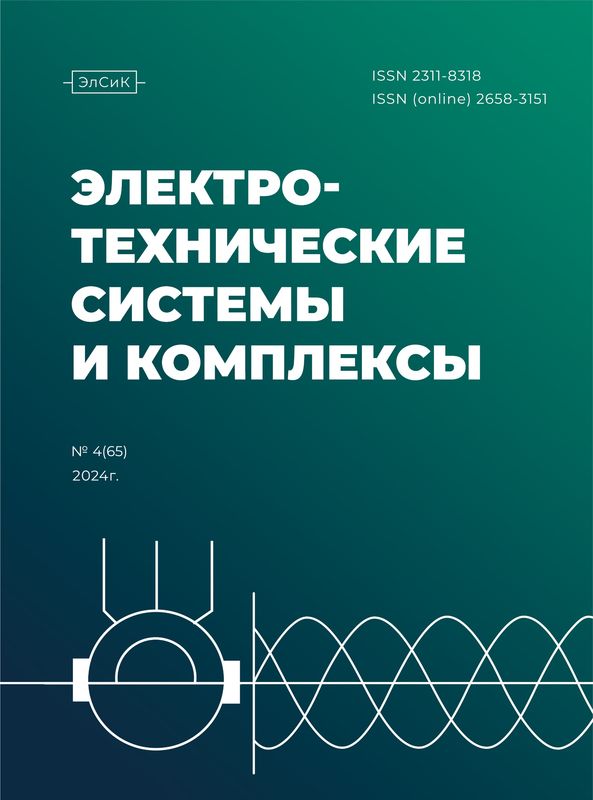Abstract
The paper presents a model of an adaptive control system for the torque of a mainline electric locomotive traction drive with a variable structure and adhesion conditions at the "wheel - rail" point. The model structure includes two circuits: the first and the second. The first circuit generates torque assignment directly from the driver. In the second circuit, the torque assignment is generated by the automatic control system. Switching between the circuits occurs based on the excess slip. The model includes a noise and delay block for modeling delays in the feedback signal and noise. Modeling of a traction drive with the "frequency converter - induction motor" structure is performed using a nonperiodic first-order link. A distinctive feature of the control system is the presence of an adaptive PI controller block and a slip setpoint block. A mathematical description of the slip quality assessment criteria block has been developed and presented. The mathematical description of the system main blocks is provided. The article presents the results of computer modeling for the traction force control system in the mode with and without excess slip. The model has been verified by the acceleration criterion. The verification was performed by comparing the acceleration graphs of the numerical experiment and the full-scale experiment directly on the object, the 3ES8 electric locomotive. The results of the numerical experiment in the excess slip mode are presented, namely, the oscillograms of the adaptive PI controller operation. It is shown that the use of the adaptive PI controller allows reducing traction motor torque fluctuations due to the dynamic change in the proportional coefficient of the controller. The results of the numerical experiment with different adhesion coefficient curves are presented. The result analysis showed that the law of choosing the slip speed allows determining the optimal slip speed with an error of no more than 4%.
Keywords
electric locomotive, traction electric drive, traction force, adhesion coefficient, wheel slip, slip speed, adaptive PI controller, adhesion torque.
1. Baklanov P.Ya., Moshkov A.V., Tkachenko G.G. Big Far East transportation and economic circuit: structure and functions in region development. Vestnik Moskovskogo universiteta. Seriya 5. Geografiya [Moscow University Bulletin. Series 5, Geography], 2023, no. 2(78), pp. 73-78. (In Russian). doi: 10.55959/MSU0579-9414.5.78.2.7
2. Samme G.V. Friktsionnoe vzaimodeystvie kolesnykh par lokomotiva s relsami [Frictional interaction of wheel pairs of a locomotive with rails]. Moscow, Marshrut Publ., 2005. 80 p. (In Russian)
3. Pichlik P., Bauer J. Analysis of the locomotive wheel slip controller operation during low velocity. IEEE Transactions on Intelligent Transportation Systems. 2021, vol. 22(3), pp. 1543-1552. doi: 10.1109/TITS.2020.297183
4. Sadr S., Khauri D.A., Rodrigues J. Predictive Slip Control for Electrical Trains. IEEE Transactions on Industrial Electronics. 2016, vol. 63(6), pp. 3446-3457. doi: 10.1109/TIE.2016.2543180
5. Samme G.V., Yakovlev V.A. Clutch characteristics and behavior of motor wheel blocks of an electric locomotive during boxing. Nauka i tekhnika transporta [Science and Technology in Transport], 2009, no. 3, pp. 16-26. (In Russian)
6. Omelchenko E.Ya., Tanich V.O., Lymar A.B. Slipping Process of Four-Axle Shunting Electric Locomotive with Inverter Powered Asynchronous Traction Electric Drive. Elektrotekhnicheskie sistemy i kompleksy [Electrotechnical Systems and Complexes], 2022, no. 3(56), pp. 28-35. (In Russian). https://doi.org/10.18503/2311-8318-2022-3(56)-28-35
7. Can K., Jingchun H., Wenqi D., Xiaokang W. Adhesion control method based on optimal slip velocity searching and tracking. 14th IEEE International Conference on Electronic Measurement & Instruments (ICEMI). IEEE, 2019. Pp. 1200-1207. doi:10.1109/ICEMI46757.2019.9101798
8. Diao L., Zhao L., Jin Z. Taking Traction Control to Task: High-Adhesion-Point Tracking Based on a Disturbance Observer in Railway Vehicles. IEEE Industrial Electronics Magazine. 2012, vol. 11(1), pp 51-62. doi: 10.1109/MIE.2016. 2644699
9. Pichlik P. Locomotive Wheel Slip Controller based on Power Dissipation in Wheel-rail Contact. International Conference on Electrical Drives & Power Electronics (EDPE). IEEE, 2019. Pp. 211-216. doi: 10.1109/EDPE.2019.8883900
10. Wang S., Zhang W., Huang J., Wang Q., Sun P. Adhesion Control of Heavy-duty Locomotive Based on Axle Traction Control System. IEEE Access. 2019. No. 7. Pp. 164614-164622. doi: 10.1109/ACCESS.2019.2952268
11. Liam De Klerk M., Saha A.K. A Comprehensive Review of Advanced Traction Motor Control Techniques Suitable for Electric Vehicle Applications // IEEE Access / 2021, vol. 9, pp. 125080-125108. doi: 10.1109/ACCESS.2021.3110736.
12. Bujnosov P.A., Antropov S.N. Corrugated rail wear taking into account friction theory of the wheel-rail pair. Transport Urala [Transport of the Urals], 2019, no. 1(60), pp. 86-89. (In Russian). doi: 10.20291/1815-9400-2019-1-86-89
Kharisov I.R., Karyakin A.L. Computer Simulation and Research of Adaptive System for Regulating Traction Electric Drive Torque of Line Electric Locomotive in Limiting Modes. Elektrotekhnicheskie sistemy i kompleksy [Electrotechnical Systems and Complexes], 2025, no. 1(66), pp. 32-38. (In Russian). https://doi.org/10.18503/2311-8318-2025-1(66)-32-38










